Buying an ADU – The Complete Guide
ADUs, also known as Additional Dwelling Units or Accessory Dwelling Units, are independent residential structures added to a property with a primary dwelling unit. If you have a primary residence, adding an ADU can be a great way to house guests or generate passive income by using the unit as a rental property and increase your property value alongside. As the traditional housing market continues to price folks out of home ownership, more and more people are turning to additional dwelling units as residential options. This comprehensive guide will walk you through the process to gain a full understanding of the potential for ADUs, questions to ask yourself or your ADU contractor before starting the process, typical costs associated, and a breakdown of Bob’s Containers process for acquiring and placing an ADU on your property.
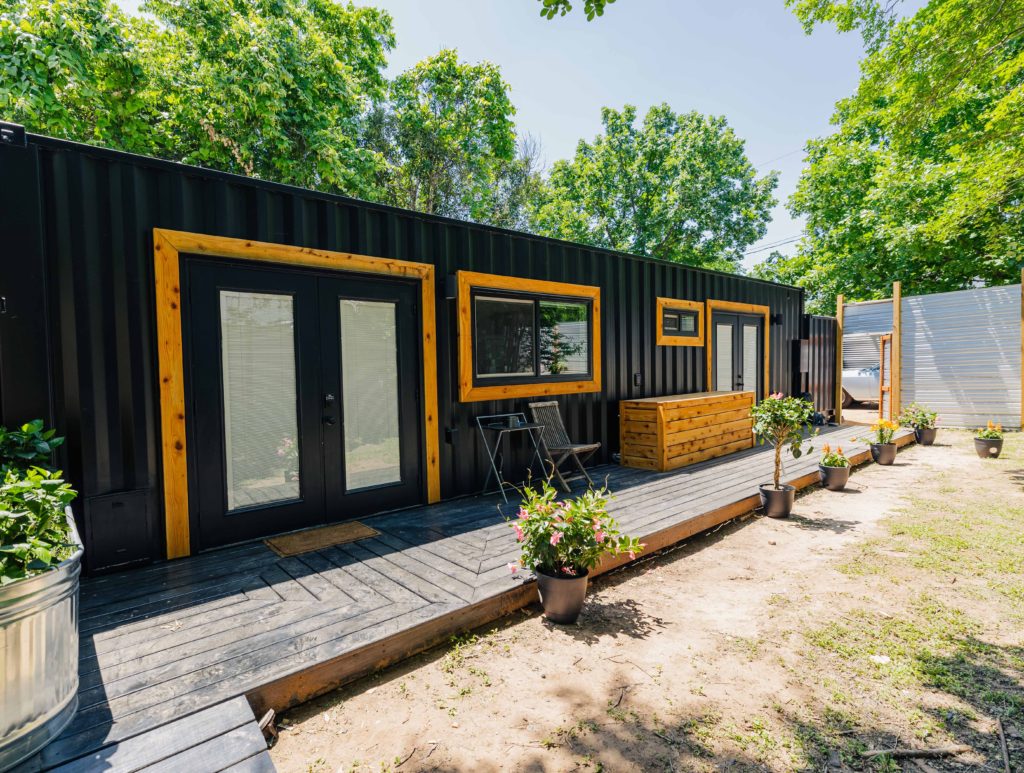
What is an ADU (Additional Dwelling Unit)?
As mentioned above, ADU is an acronym for additional or accessory dwelling units. The main types of ADUs are:
- Junior ADU (JADU)
- Basement ADU
- Backyard Cottage ADU
- Garage ADU
- Attached ADU
- Detached New Construction
Junior ADU
We will start with junior ADUs, since these are, for the most part, what we here at Bob’s Containers build for our customers. A junior ADU is an additional dwelling unit that is less than 500 square feet. One of our 20 ft container homes comes in at 160 square feet and our 40 ft container homes are 320 square feet. Once you get into the triple wides and other multi-unit containers you start to enter the other options listed above, such as a detached new construction, but we will get there later. Junior ADUs are excellent, cost-effective options to increase your property value and utilize the space as a rental property to generate passive income. Each type of ADU has this potential, so let’s talk about the benefits of sticking to the “junior” version of these units.
The first and most obvious benefit to a junior ADU is the reduced footprint. A 20 ft unit takes up an 8 ft x 20 ft space on your property while maintaining the comfortability and functionality of a studio style apartment. These are great options for a single family with no children or a single person on a short stay. Our 40 ft homes expand all of these options with double the square footage. Take a look at our Porter and Alpine models to see the potential of a basic 40 ft ADU and a more luxurious unit with all the bells and whistles with the Porter model.
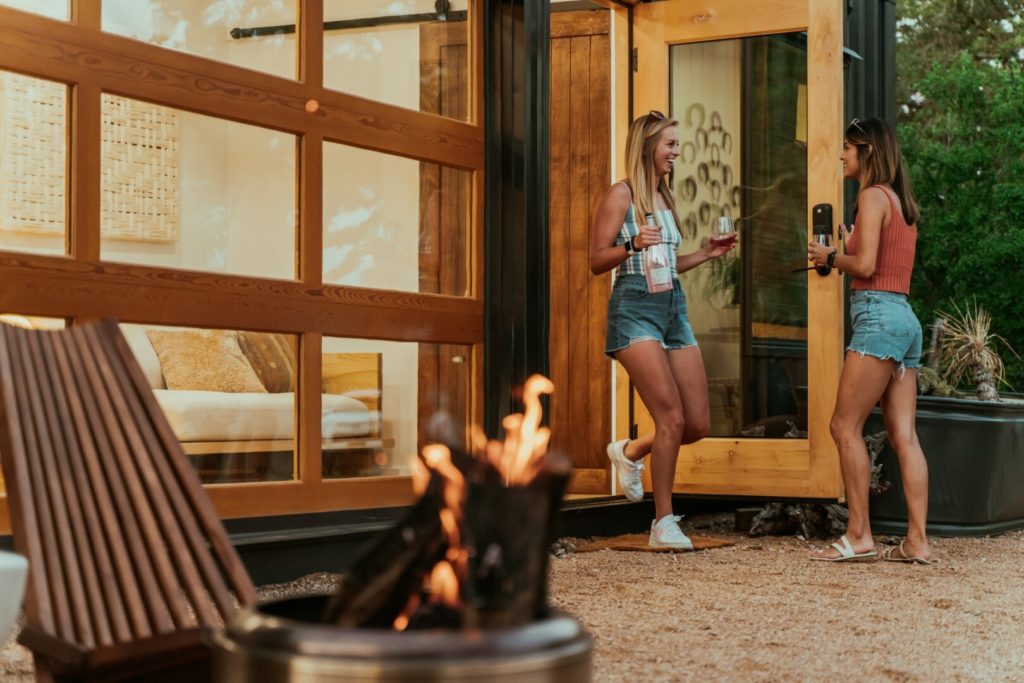
Junior ADU Pros
- Smaller Footprint
- Separate from the Main Residence
- Electricity Costs for a Smaller Unit
- Can be built off site and shipped to location
Junior ADU Cons
- Smaller Space for Guests
- More Upkeep (basically an independent, second home)
- Delivery can be tricky for smaller properties
Basement ADU
A basement additional dwelling unit converts the basement of your home into an independent living area. While each municipality has its own set of requirements, they are largely the same in the need for a separate entrance, a functional bathroom, and connections to the primary residence’s water supply, unless you are building a fully independent unit to charge guests for water/electricity usage. Basement ADUs utilize the structure that is already present on the property, so you have less worry about the elements. As long as your basement was watertight prior to the conversion, you should not have to worry about it being watertight once the conversion is complete. This is an especially enticing option for a primary residence with an unfinished basement. You are basically starting from scratch in that case, when there will be some teardown and rebuilding if you have already outfitted the basement to match your own needs in the primary residence.
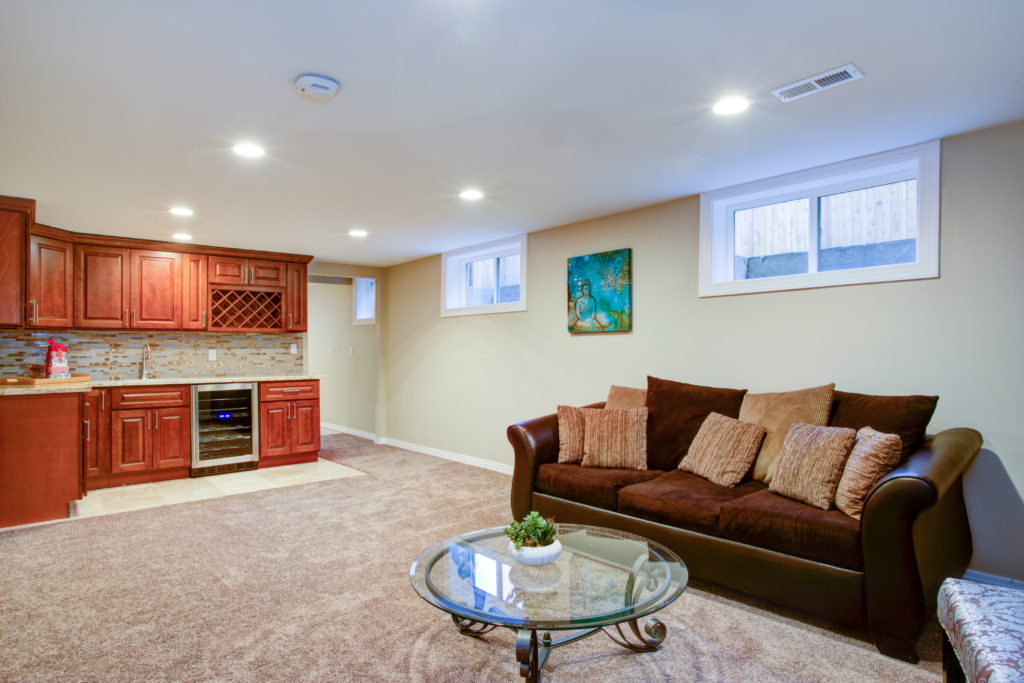
Stunning basement interior boasts a nice wet bar composed of wood shaker cabinets with granite countertop and a mosaic backsplash.
Basement ADU Pros
- Uses Pre-existing Residential Structure
- Minimal Construction
- Potential to Use Pre-existing Water and Electricity
Basement ADU Cons
- Your Guests are in Your Primary Residence
- May Have to Move Furnaces/Water Heaters
Backyard Cottage ADUs
Backyard cottage additional dwelling units are similar to Bob’s Containers 20 and 40 ft container homes, with a little more square footage. These are great options if you are looking for increased space for your guests for larger groups. Backyard cottages are typically limited to a maximum of 800 square feet which includes a bathroom, bedroom, kitchen, and living area. Each of our containers fit this description as well, with a smaller footprint. Backyard cottages can increase your property value significantly, so do consider the tax implications before diving into construction.
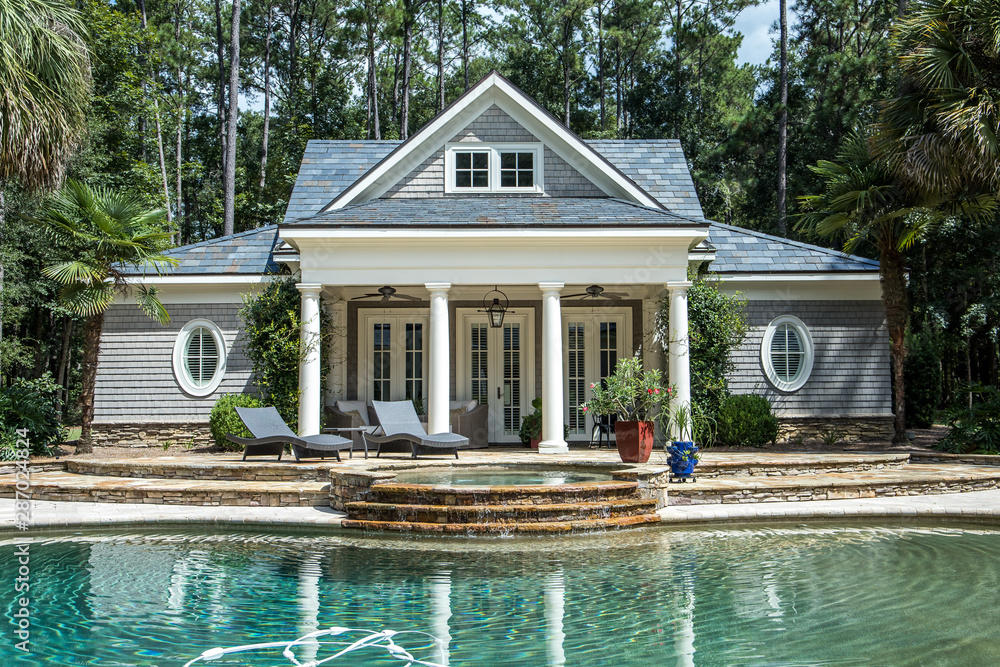
Backyard Cottage ADU Pros
- Larger, more Comfortable Space
- Detached, Independent Unit
- Increase in Property Value
Backyard Cottage ADU Cons
- More Upkeep
- Separate Utilities
Garage ADU
A garage ADU uses the garage structure already on the property. Similar to a basement ADU, these are great options since they use a pre-existing structure and build out the interior. You typically need a pretty tall garage space to be able to build out an ADU in a garage if you plan to use the space above where you park to inhabit your guests. You can also fully convert the garage into an ADU, but that would leave you with uncovered parking unless you build a new structure. Two car garages average between 400 and 750 square feet so there is a large amount of space to work with and turn into what you want. Most of the effort comes in the form of interior finishing, including walls and plumbing since the structure is already present.
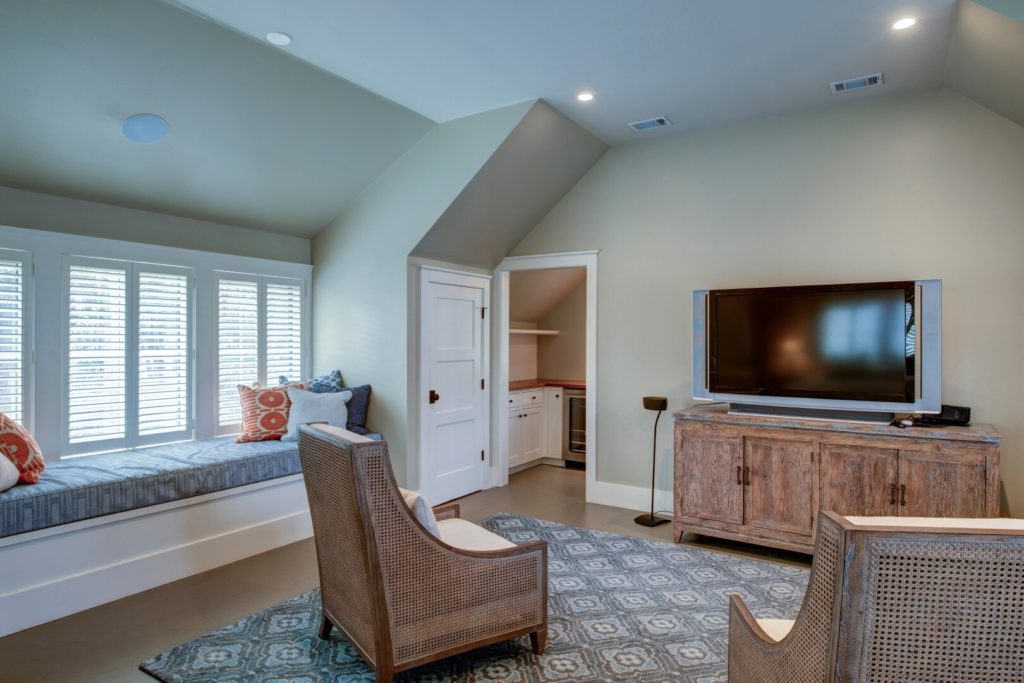
Simple upstairs apartment above a garage.
Garage ADU Pros
- Minimal External Construction
- Larger Space
- Use the Garage Door as an Entrance
Garage ADU Cons
- Can Eliminate Covered Parking for the Primary Residence
- Garages do not Usually have Plumbing
- Garages do not Usually have Windows
Attached ADUs vs. Detached ADUs
A few of the options above would be considered attached additional dwelling units. The garage ADU option would be an attached ADU if the garage is connected to the house. The direct explanation for an attached ADU is an accessory dwelling unit that shares a wall with the primary residence. With this in mind, a basement ADU would be an attached ADU as well.
Bob’s Containers builds detached additional dwelling units since they will not be tied to the house in any way. These are freestanding residential units that are completely separate from the primary dwelling.

Deciding Which ADU Option is Right for You
Understanding the needs of your guests comes first when trying to determine which type of additional dwelling unit is right for you. The following four options are the use cases we see most:
- Backyard Rental Unit
- Guest House
- In-law Suite
- Granny Flat
Each option has its own set of needs. For instance, if you are looking for a backyard rental unit, consider the amount of guests you would want to inhabit the area since you will be sharing your own space with these guests in most cases. Maybe you want a unit that can accommodate a family of 6 at a minimum. A detached cottage style ADU may be your best option. On the contrary, you may only want couples to rent the place out and a 20 ft or 40 ft container home can house 2 guests comfortably. This decision matrix leads us to our next section, learning about the process.